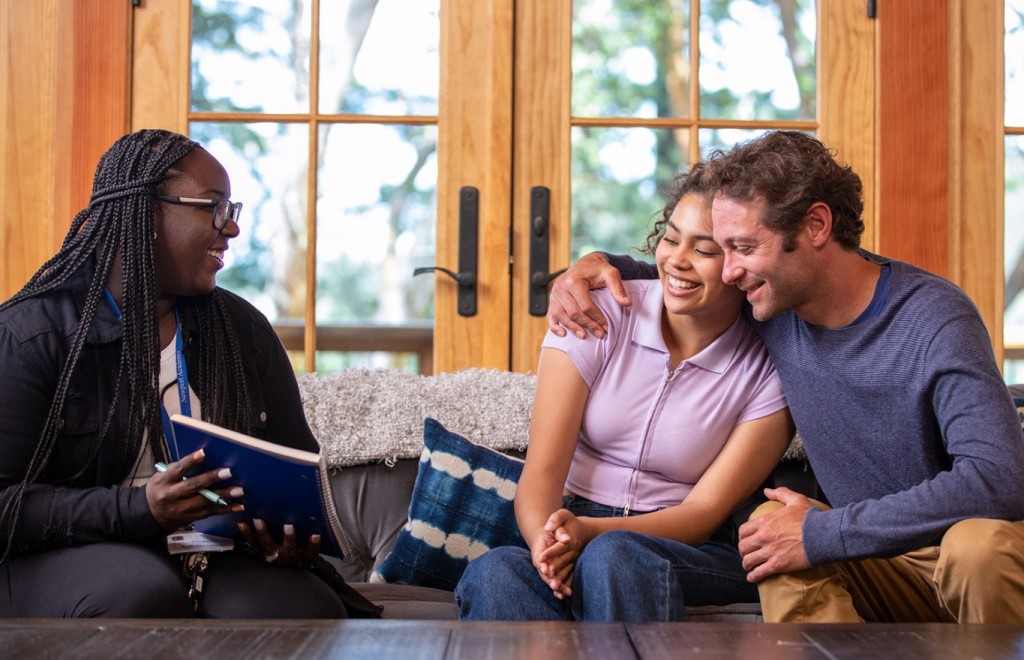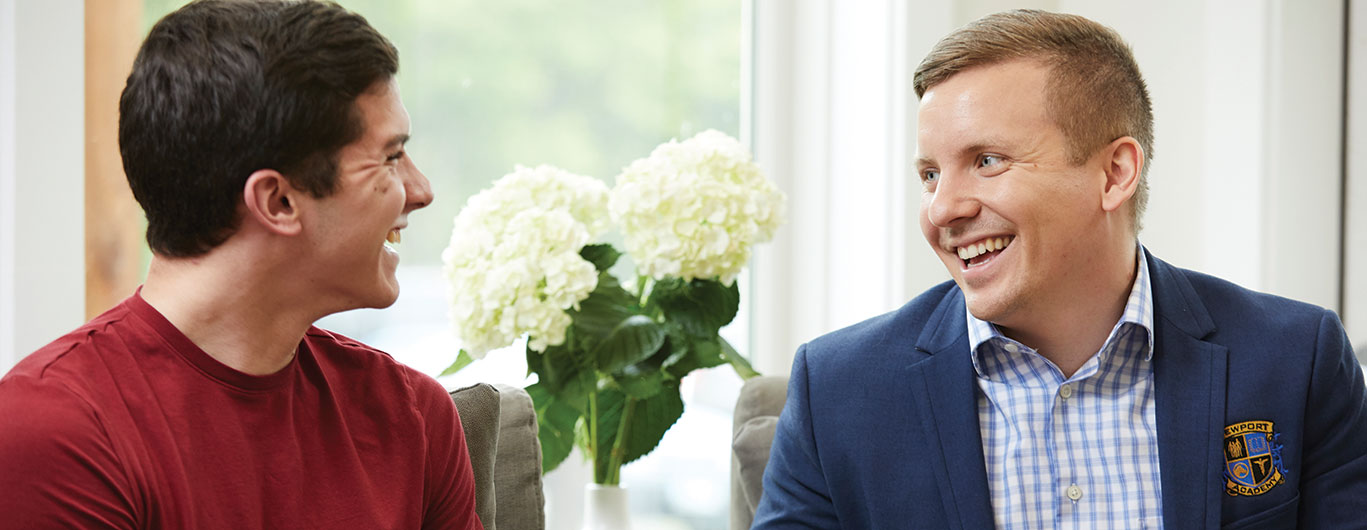A Q&A with Newport’s Karla Molinero, MD
Not every teen who starts therapy is happy to be there, at least not right away. While some adolescents with mental health issues are eager to begin the work of healing, many teens enter treatment feeling frightened, defensive, or shut down. That’s why building rapport with teenage clients is so essential for clinicians, to support adolescents to engage in the therapeutic process as quickly and fully as possible.
Karla Molinero, MD, Medical Director at Newport Healthcare’s Utah location, specializes in helping teens to feel safe and supported in treatment. A triple board-certified adult, child, and adolescent addiction psychiatrist, she completed her fellowship in Child & Adolescent Psychiatry at Yale University, her General Psychiatry residency at the University of Rochester, and her Addiction Psychiatry fellowship at the University of Colorado.
Dr. Molinero’s philosophy of therapeutic psychiatry takes a holistic view of patients and their family systems. She believes that connection with self and others is essential in recovering from mental health disorders, substance use disorders, and addictive behaviors. Here she shares her approach to building rapport with teenage clients within the residential treatment milieu.
What is the importance of building rapport with adolescent clients?
Building a rapport in counseling is essentially creating a space of safe, nonjudgmental, open communication that allows the client to feel like they can talk about anything without the fear of being punished or shamed or any other negative consequence.
Teens can feel pretty down on themselves for not living up to the expectations they have for themselves, or their parents have for them. As clinicians, we have the opportunity to come in as someone who doesn’t necessarily have expectations for them.
Rapport is a building block. You’re building trust, which creates room for therapeutic alliance—the understanding that you’re both on the same side and you’re working together to achieve their treatment goals.
How do you begin establishing rapport with a new client?
The first session is really important. That can lay the foundation for the therapeutic relationship. I tell teen clients, “This is a space for you to tell me what’s going on and for me to learn how I can best help you.” Not every client is going to open up right away, but I make sure they know that I’m there and willing to listen.
I had a patient recently who asked me, ‘Wait, aren’t you the psychiatrist, shouldn’t you only be talking to me about meds?” I told him, “Yes, that’s part of my job, but I really need to know your whole story, your background, what you want, how you see your future.” There are certain safety concerns with young people that may require me to share information with parents, but outside of that, I tell them that this is their space, they can tell me what’s going on, and the more I’m able to know, the better I can help them.
I’m not quick to hand clients a tissue if they tear up, because I don’t want them to feel like I’m trying to get them to hurry up and stop crying. I want them to know they can cry here and they can take their time.
Karla Molinero, MD
What are those first conversations like?
I leave a lot of space for open-ended discussion—I’ll say to them, “Tell me about yourself.” I’ll ask them questions like, who do they live with at home, what are those relationships like, what grade are they in, how is school going. It’s not just about symptoms or how they got here, it’s about looking at a picture of their day-to-day life.
What they share in those discussions I may use later on—for example, if I’m using Motivational Interviewing, I can reflect back to them what they’ve expressed is really important to them. The more details I know about their goals and dreams, the more I’m able to bring those back and remind them of their values and what’s important to them, and talk about how they can make some changes to help them reach those goals.
How do you support clients to engage with the therapy process from the very beginning?
In my first assessment with every client coming into treatment, I always say to them at the end of the session, “Whether or not you want to be here, you’re here, and you might as well make the most of it. What are your goals for your time here?”
They might share with me that they want to learn how to be sober, or how to improve communication with their family, or how to love themselves more. Then, in our last session, I bring my notes and we look back at those goals and see where they are now.

Dr. Molinero’s Top 5 Keys to Build Rapport with Adolescent Clients
Create a welcoming physical environment
I have a huge beanbag in my office that clients can get comfy on, and tons of fidget toys they can play with if they get anxious. I usually have an oil diffuser going, maybe with lavender. If they want to turn the lights down or turn on a lamp instead of the overhead lights, we can do that. There’s a self-care check-in list hanging on the wall, and some posters about DBT [Dialectical Behavioral Therapy] skills and Twelve-Step programs, so they can get an idea right away of the tools we use.
Be aware of your nonverbal communication
Even if a client tells me something pretty shocking, I make sure my body language and facial expressions don’t reveal that I’m surprised. I lean forward a lot, and if they get emotional, I’ll match their expression. I’m not trying to cheer them up—I want to let them experience what’s arising. I’m also not quick to hand them a tissue if they tear up. I’ll give them 30 seconds or so before I offer that, because I don’t want them to feel like I’m trying to get them to hurry up and stop crying. I want them to know they can cry here and they can take their time.
Get outside the office, and outside the box
A walk-and-talk session outdoors can work really well. Walking side by side can be easier for teen clients who find eye contact intimidating. I’ll also encourage kids to bring things they like into the session. If they play the ukulele, I’ll ask them to bring it along and play something. Or if they like to draw or collage, we can incorporate that into the sessions. If they’re nervous about talking, talking while they’re drawing can make it easier.
Encourage them to use this time well
To help engage a resistant adolescent in therapy, I will remind them that is actually an incredible opportunity, one that they might really appreciate in hindsight. A couple of months is really just a fraction of a second in their life, but these couple of months can change their entire life. They can move forward with a strong foundation—a better relationship with their family, better friendships, and tools for a successful life.
Be present and listen actively
Listening is simple but not easy, and it’s a huge part of building rapport with teenage clients, and really with anyone. That’s true whether you’re establishing a relationship with colleagues or friends or clients. So, I’m not multi-tasking, my phone is silenced. I might ask the client if it’s okay if I take some notes so I can remember the details, and they’re usually okay with that. That direct attention is what so many of our kids need—feeling like they are really heard and you are really there for them.
Learn more about our teen treatment programs at newportacademy.com.
